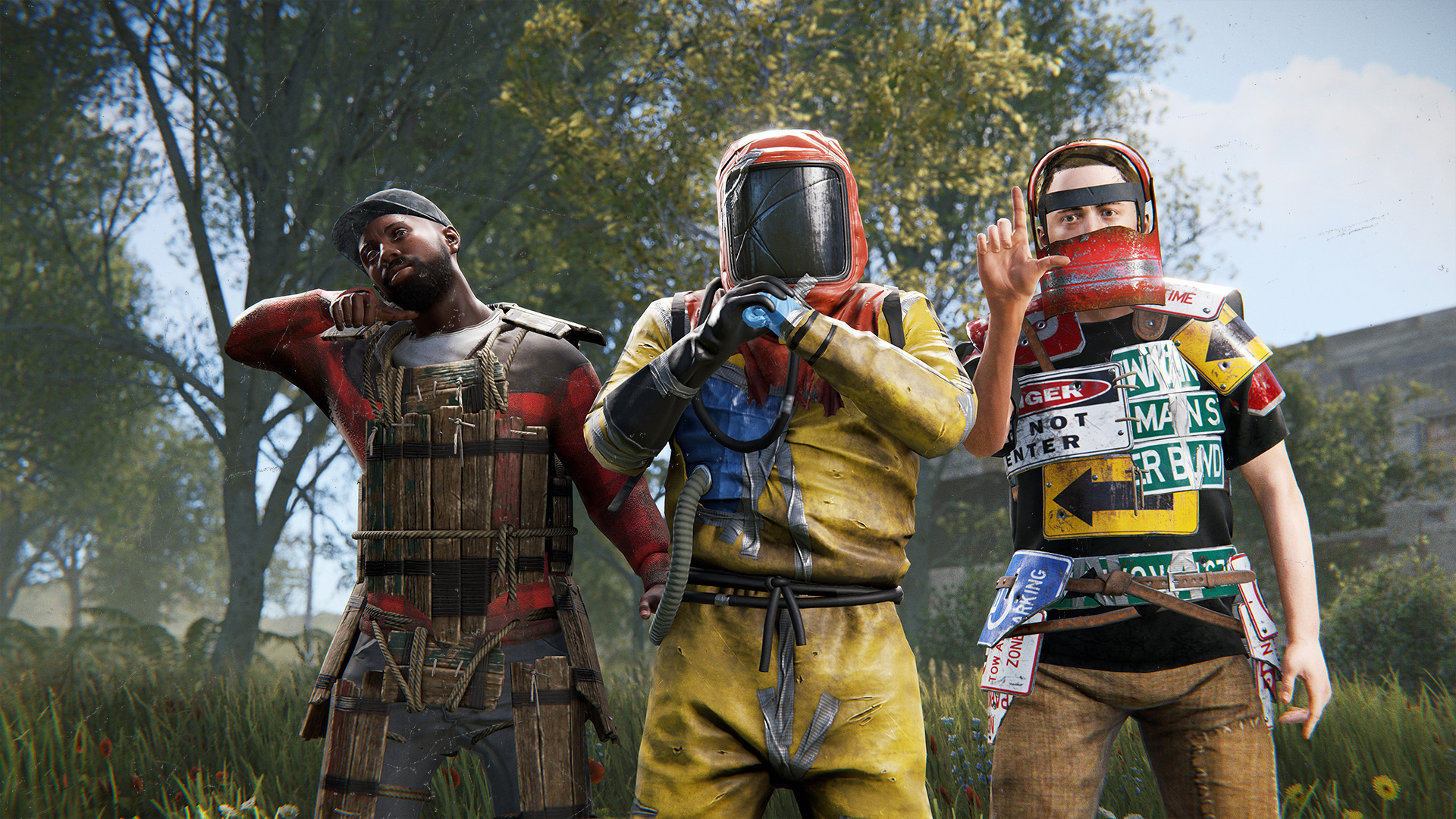
A Comprehensive Starter Guide to the Essential Rust Beginner Tips
Embarking on the gritty and relentless journey that Rust offers is an experience that hinges between thrilling survival and unforgiving challenges. As a newcomer, the harsh realities of Rust’s world may seem overwhelming, yet with the right guidance, the path to becoming a seasoned survivor is a reasonable goal. This starter guide for Rust serves as your companion through the early stages of Rust, offering a reservoir of essential tips to navigate the difficulties of the game. These tips are in no specific order, but just to offer a rich library of vastly beneficial information to a new player of the game.
How to Choose the Best Rust Server for Beginners
Types of Rust Servers Explained
1. Official Rust Servers
Managed by Facepunch Studios, the developers of Rust, these servers are often highly populated with experienced players. While they provide a pure Rust experience, beginners may find them challenging due to intense competition and high skill levels.
2. Community Servers
Run by players, these servers typically feature more active admins and a friendlier environment. Many have custom rules or plugins designed for a more relaxed or structured gameplay experience, making them ideal for newcomers.
3. Modded Servers
These servers alter the vanilla Rust experience with faster resource gathering, custom plugins, or unique gameplay mechanics. If you prefer a less grindy start, modded servers can be a great option.
Best Rust Servers for Beginners
To ensure a smooth start, look for:
✔ “Beginner-Friendly” or “Noob-Friendly” tags – These servers often have rules protecting new players.
✔ Active admins – Helps maintain a fair and welcoming environment.
✔ Freshly wiped servers – Avoid joining right after a wipe (when population peaks), as competition is fiercest. Instead, look for servers a few days post-wipe for a more balanced experience.
By choosing the right server, you’ll set yourself up for a more enjoyable and less frustrating introduction to Rust.
Resource Gathering
The backbone of survival in Rust revolves around gathering essential resources. Here are the primary resources you’ll need initially:
- Wood: Your primary building material. Obtain wood by hitting trees with a rock or, later, a hatchet.
- Stone: Used for crafting and upgrading your base to a sturdier material. Gather stones from rock nodes scattered across the map.
- Metal Ore and Sulfur Ore: Essential for crafting advanced items. Find these in rock nodes as well, but they require a furnace to smelt into usable materials.
- Cloth: Used to craft bandages, sleeping bags, and clothing. Always gather the hemp plants on the ground when you see them to quickly craft cloth-based items.
Efficiency is key—aim for the red X on trees and the shining spots on rock nodes to gather resources much faster. Check your surroundings from time to time.
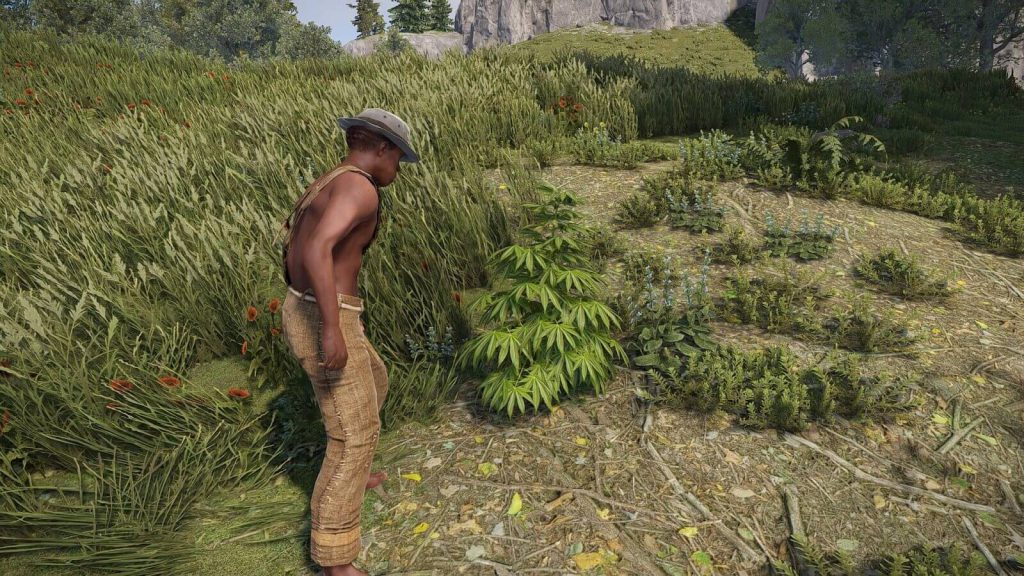
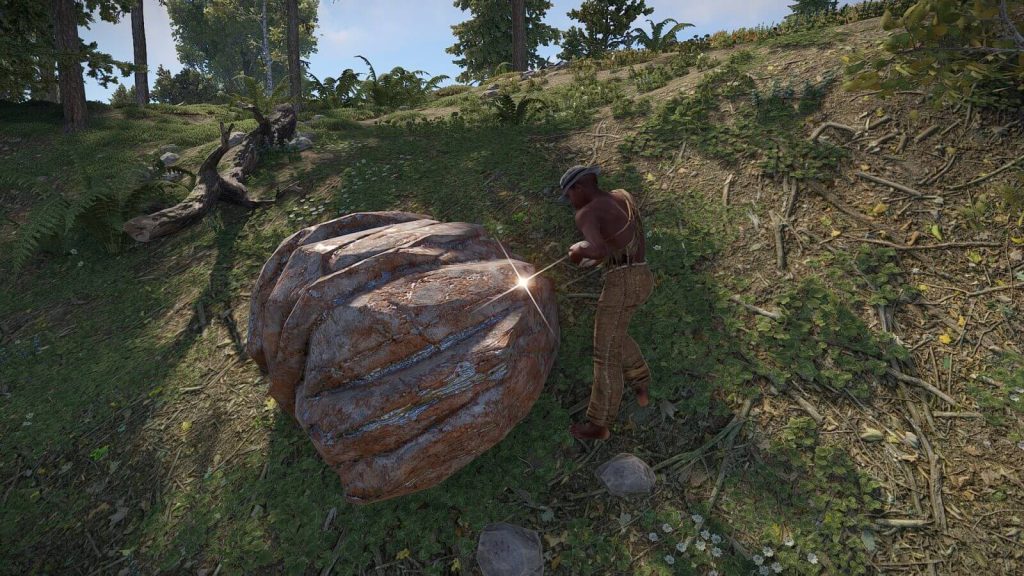
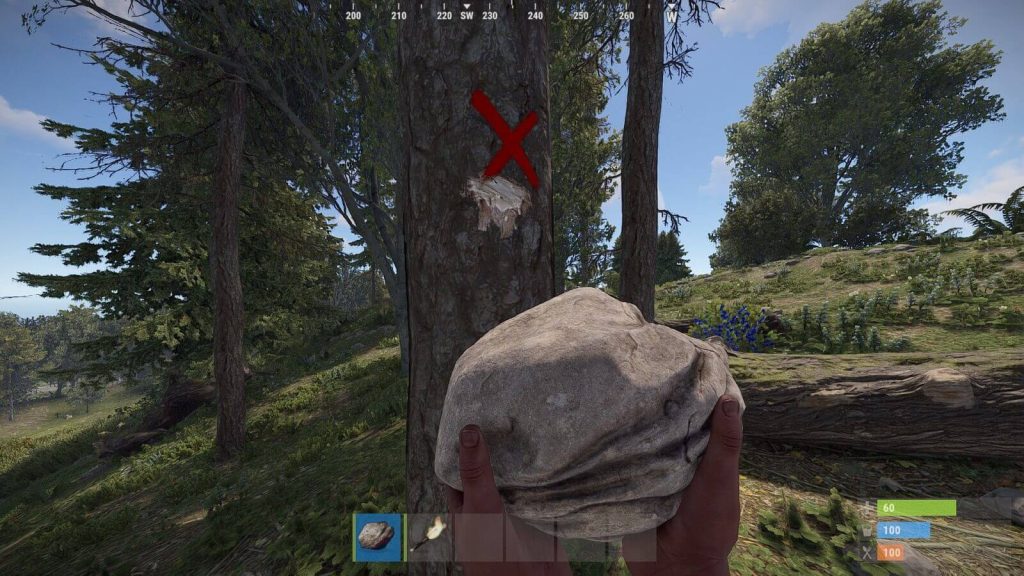
Crafting the Essentials
Crafting is your gateway to better survival tools, shelter, and defense mechanisms. Initially:
- Craft a defensive tool such as Spear which is only 300 wood or alternatively a bow with arrows.
- Craft a Stone Hatchet and a Stone Pickaxe for faster resource gathering.
- A Sleeping Bag is crucial for setting a respawn point, make sure to craft and place one early on using cloth.
- Craft a Building Plan and Hammer to start constructing your shelter.
You can also browse crafting calculator sites to get the exact requirement needed for any item as well as more information about items, costs, amounts, etc, from sites like Rustlabs

Building a Base
Your base is your sanctuary, where you’ll store resources, respawn upon death, and take a breather from Rust’s harsh environment.
- Location: Living further away from higher-tier monuments is ideal when starting to avoid high-traffic areas. Also, live close to resources if possible.
- Design: Start with a simple design like a 1×1 or 2×1 with an airlock to prevent raiders from easily accessing your base. Check out Sigbog on Youtube which showcases many interesting base-building tips to save on space and more!
- Upgrade: Upgrade your base to stone as soon as possible to enhance its durability against raids.
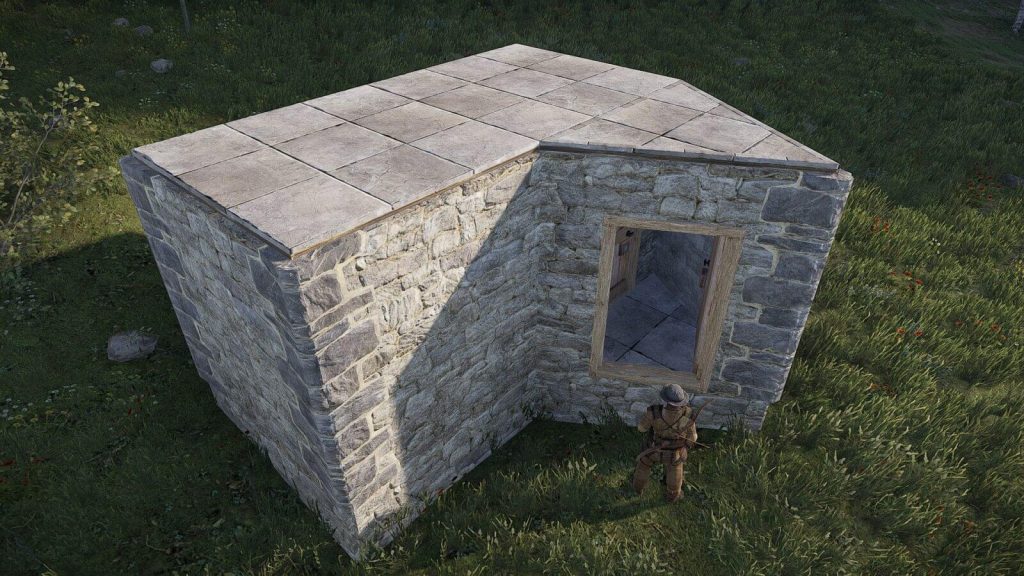
Food, Water, and Health
Keeping your metabolism in check is crucial in Rust and your overall health as you’ll start to die slowly if you starve/dehydrate:
- Hunting Animals: Using a bow, spear, or other weapon hunt for animals and then use a hatchet, or bone knife to harvest them for raw meat, animal fat, hide.
- Cooking: Just after hunting you will want to cook the raw meat in a timely manner since it will spoil. Craft a campfire and place the raw meat to quickly cook it.
- Water: Find fresh water sources in rivers or collect it from water catchers. You can store this in water bottles or drink from rivers directly when looking down.
- Radiation: Be cautious around larger monuments as they include radiated areas; you’ll need proper clothing or radiation pills to explore these regions safely.

Sleeping Bag Placement
Place a sleeping bag inside your base for a reliable respawn point. Additionally, place extra sleeping bags hidden in nearby bushes or other concealed spots as backup respawn points in case your base is being camped by hostile players.
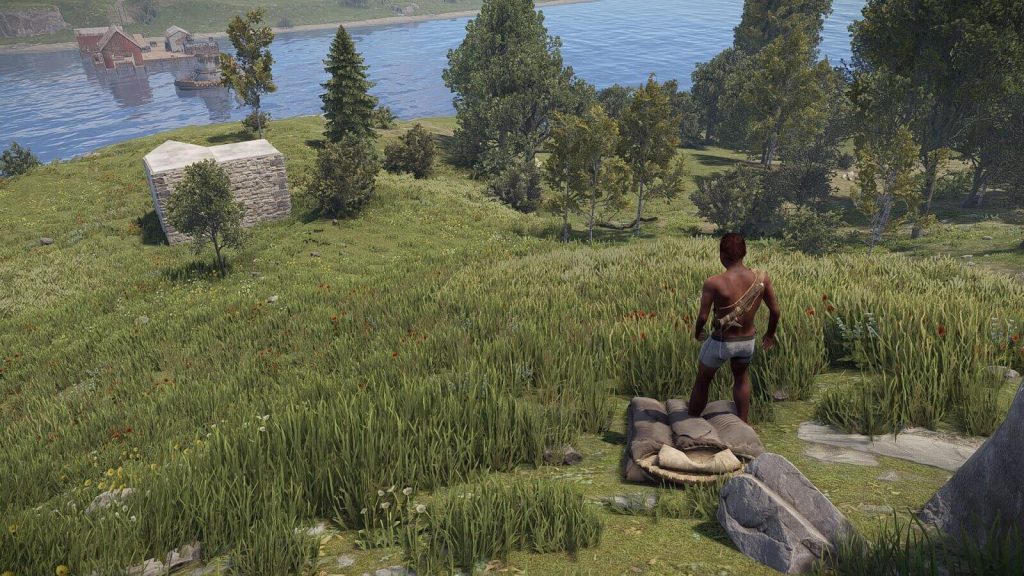
Combat & Self-Defense
In Rust, threats lurk around every corner. Equip yourself with basic weapons like a spear or a bow initially, and as you progress, aim to acquire firearms to better defend yourself. Understanding the basics of combat, such as aiming, taking cover, and choosing your battles wisely, will significantly improve your chances of survival.
Research & Crafting
Scrap is a valuable resource used for researching items at a Research Table or unlocking items within the Workbench, allowing you to craft them later. Collect items and scrap to gradually from roadside barrels and boxes around the map to build up your arsenal of craftable items. Remember, some items can only be acquired through looting and then researching.
Base Upkeep
Your base will decay over time if not maintained. To prevent this, ensure you have a Tool Cupboard filled with necessary resources like wood, stone, and metal fragments for upkeep. Regularly check your Tool Cupboard to replenish the resources and keep your base standing strong.
Alternatively, there are tips you can utilize to vastly optimize your actual upkeep cost by utilizing mechanics in the game. We recommend watching this video by Sigbog!
Radiation Protection
Many valuable looting areas in Rust are radioactive. Ensure you have adequate radiation protection before venturing into these zones. Acquire clothing items like Hazmat suits or pieces of clothing with radiation resistance to shield yourself from radiation poisoning. As featured by Sigbog, hazmat suits are much weaker against NPC damage so we recommend wearing alternative clothing sets for your best fighting chance!
Precautions: Carry lots of water, medical syringes, or food in high-radiated locations.
- No Radiation Protection Required:
- Abandoned Cabins
- Cargo Ship (before exit warning)
- Dome (Outside)
- Harbor
- Junkyard
- Mining Outpost
- Abandoned Supermarket
- Oxum’s Gas Station
- Lighthouse
- Ferry Terminal
- Quarry (Any type)
- Low Radiation Protection (10):
- Dome (Inside)
- Satellite Dish Array
- Sewer Branch
- Gear: A full set of burlap is sufficient.
- Medium Radiation Protection (20):
- Airfield
- Train Yard
- Water Treatment Plant
- Gear: Full set of burlap, wooden armor, and a bandana or a single snow jacket.
- High Radiation Protection (30 or a Radiation Suit):
- Launch Site (additional protection needed for main building)
- Military Tunnels
- Power Plant
- Nuclear Missile Silo
- Gear: Radiation suit or Snow jacket with other gear.
- Extreme Radiation:
- Launch Site Main Building
- Cargo Ship (after exit warning)
- Nuclear Site Steam Generators
Rust Beginner’s Guide: Essential FAQs for New Players
Starting Rust can be overwhelming, but knowing the basics will help you survive longer and enjoy the game. Below, we answer the most common questions new players have.
1. What Should I Craft First in Rust?
Your first priority should be crafting essential tools to improve efficiency:
✅ Stone Hatchet or Stone Pickaxe – Gather resources faster than using just a rock.
✅ Spear or Bow – Basic weapons for self-defense against threats.
✅ Building Plan – Essential for constructing your first base.
Pro Tip: Start by collecting wood, stone, and cloth with a rock before crafting better tools.
2. Can You Play Rust Solo?
Yes, but it’s more challenging due to groups dominating servers. To improve your solo experience:
✔ Play on low-population or “Solo/Duo” servers.
✔ Choose beginner-friendly or PvE (Player vs. Environment) servers if you prefer less combat.
✔ Look for active admins to prevent unfair bullying from clans.
Solo Survival Tip: Stay stealthy, avoid unnecessary fights, and build hidden bases.
3. What’s the Best Way to Start in Rust?
Follow these steps for a strong early-game foundation:
1️⃣ Pick the Right Server – Opt for beginner-friendly, low-pop, or solo-only servers.
2️⃣ Gather Basic Resources – Collect wood, stone, and cloth immediately.
3️⃣ Craft Essential Tools – Make a hatchet, pickaxe, and weapon quickly.
4️⃣ Build a Small, Secure Base – Protect your loot from raiders.
5️⃣ Explore Cautiously – Avoid unnecessary fights early on.
6️⃣ Make Allies (If Possible) – Teaming up can help against larger groups.
Bonus Tip: Avoid freshly wiped servers—they’re the most chaotic. Instead, join a server a few days after wipe for a smoother start.


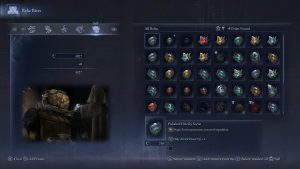

Leave a Reply